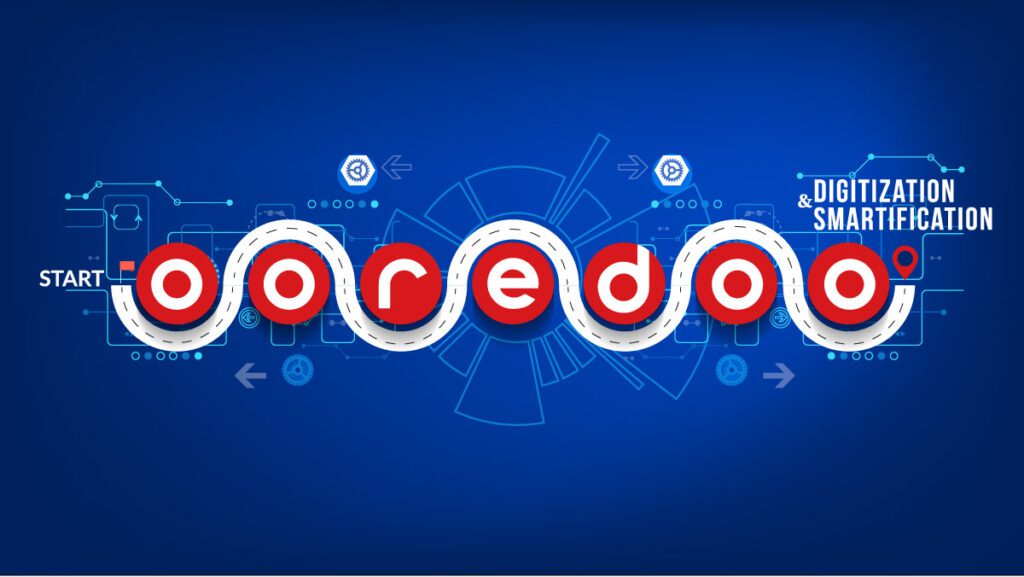
Ooredoo is the leading telecom operator in Qatar and one of the longest-serving communications service providers in the region. Formerly known as Qatar Telecom (Qtel), it adopted the new brand of “Ooredoo” in March 2013. It is mainly owned by the Qatari government or affiliated organizations, at a sum of 69 percent. It is classified as the third most valuable brand behind its main rivals and neighboring operators STC and Etisalat, with a value estimated at $3.4 billion with a brand strength index (BSI) of 78.6 over 100.
Internally, Ooredoo competes with Vodafone Qatar, which began operating in 2009. Internationally, Ooredoo operates across ten countries and serves over 120 million customers with a strategy to increase its global footprint further and diversify its revenue sources.
The operator has been showing healthy figures in the last year, with the telecom sector making out 95 percent of the total revenues. Qatar with 25 percent and Indonesia with 24 percent are the two top markets in terms of generated revenues within the telecom sector.
Solid, Yet With Complex Factors to Manage
Although Ooredoo has remained on the podium of valuable brands and has maintained positive profits despite the challenging conditions in the previous years, the group still faces persistent challenges to overcome, mainly of geopolitical nature.
The company’s large state backing means its operations are heavily influenced by the country’s economy and by the reigning geopolitics. The recent blockade that hampered the country’s progress and the ‘unhealthy’ relations with the Gulf Cooperation Council (GCC) in the previous years meant that Ooredoo needed to play around with some tricky conditions to strive. Qatar’s economy also relies heavily on oil prices which have been volatile in the previous years leading to further threats to the company’s dynamics.
On the international level, Ooredoo group operates in challenging markets with notable political instability, such as Palestine, Tunisia, and Myanmar, adding up to the constraining conditions the company needs to deal with. The rise of mobile virtual network operators, regulatory changes, and changing dynamics in the telecom sector constitute additional complex factors in managing.
Given the rapidly changing conditions, juggling all these conditions is certainly an extremely complex task, especially since it takes a random nature. A reactive approach means that the company will fall behind and crumble under pressure. However, by ensuring a certain maneuverability margin, the company can and will be able to build on its strengths and opportunities rather than fall for the looming threats.
This is precisely what happened during the coronavirus pandemic. Despite important disruptions to the supply chain and logistics, Ooredoo has been able to rely on its strong infrastructure to support hugely coveted services such as entertainment, online learning, e-commerce, and cloud services and therefore maintain good profitability.
Asserting its 5G Leadership
As in neighboring GCC countries, Qatar was among the first global countries to deploy a 5G network in 2018. Since then, the operator has been strengthening its 5G network, ensuring proper coverage and capacity. The rush to 5G, even before its handsets were readily available, is seen as a vital step towards digital transformation as 5G technology is an enabler to many enterprises and personal-based solutions.

To achieve a full-scale 5G deployment, Ooredoo partnered with Ericsson signing a memorandum of understanding (MoU) at the mobile world congress (MWC) in 2019, followed by a reinstatement at MWC 2022 with new 5G-related endeavors. The Qatari operator also recently partnered with Nokia to use a bouquet of its products to introduce 5G fixed wireless access and Wi-Fi solutions. Doing so ensured high-speed, reliable connectivity, unlocked smart home services, and internet of things (IoT) use cases.
Ooredoo’s Supernet, as it is denoted, relies on two 5G bands, the 2.1 GHz and the 3.5 GHz bands. Notably, the 2.1 GHz band offers coverage for most of the Qatari territory, whereas the 3.5 GHz enables download speeds to peak at 2.5 Gbps.
Digital Transformation at Full Scale
Ooredoo has been leading a true digital transformation campaign using the newly established 5G network and various partnerships to provide disruptive changes to different sectors. These include entertainment, logistics, automotive, smart cities, energy, and utilities. Ooredoo’s collaborations with neighboring operators are rather rare. However, one collaboration to note was with Etisalat, Omantel, STC, Turkcell, Turk Telekom, Vodafone, and Zain on a smart city initiative to address population-related challenges and deliver socio-economic benefits.
Ooredoo’s commitment to smart cities has been impressive, to say the least. This demonstrates its dedication to supporting Qatar National Vision 2030 in making the country one of the best-connected countries worldwide, especially since it is majority-owned by the State. Lusail has been the first city to experience digital metamorphosis. Relying on the solidly deployed 5G network, data would be relayed from different sensors around the city to create intelligent solutions such as smart waste and traffic management systems and lighting systems. The ‘smartification’ will even touch different sectors through the established TASMU platform, which targets five key sectors: transportation, healthcare, logistics, environment, and sports. The new project involves several partnerships, notably with Microsoft through its Azure platform, Delta partners, PwC, Oliver Wyman, Deloitte, Accenture, Tata, Malomatia, and Atos (to strengthen cybersecurity).
The latest MWC witnessed the signing of several MoUs, notably with Google Cloud, to develop Ooredoo’s entertainment offerings to its customers. Moreover, AI solutions will be developed to improve enterprise customer experience. Connected vehicles and the automotive industry was central element of an MoU signed with Toyota and KDDI. This will allow the telco provider to be the IoT connectivity enabler for Toyota’s new Lexus connected car services in Qatar.
The partnerships have kept going to cover other areas as well. Ooredoo has collaborated with Dell to support the telco’s next-generation digital infrastructure using its storage solutions and cybersecurity offerings. It has also partnered with e-sports company Quest to launch its e-sports brand Ooredoo Nation. Finally, it maintained its strong relations with Nokia and Ericsson in establishing an LTE network for the country’s oil and gas industry.
A Lonely Journey
It seems that the digital transformation wave is undeniably hitting every operator globally and notably in the GCC countries. Ooredoo’s efforts make it among the leading operators moving in that direction. However, the company is leading a solo effort, detached from the neighboring operators. The effects of the blockade and political tensions seem to be long-lasting even after the restoration of diplomatic relations. Ooredoos’s presence is missing from the latest collaborations among GCC operators, including cooperation between STC, Etisalat, Mobily, Zain Group, and Du. The cooperation is crucial to push the implementation of an open RAN forwards and the latest MoU at MWC 2022 between the same players (without Mobily) and Omantel and Batelco to reduce the carbon footprint and ensure the environmental sustainability of the telecom sector. In return, the company has followed its own path with Indosat Ooredoo, the telco provider in Indonesia that has conducted openRAN field trials on the 4G network. The operator has also reiterated its commitment to preserving the environment in its latest environmental, social, and governance (ESG) report.
Summary
Ooredoo is certainly leading its own way through evolution. It has been actively investing in any opportunity that can help it achieve its targets and, more macroscopically, contribute to the fulfillment of the country’s vision. The path to success has been marked by several partnerships, as has been the trend with other operators. The unique aspect of Ooredoo’s approach is its sole reliance on the markets where it is present rather than sharing its know-how with neighboring operators. Up to this moment, the strategy is looking successful, with revenues on the positive side. However, with the drive to open architectures and increased collaborations, Ooredoo would certainly have to rethink its isolationist approach.
Inside Telecom provides you with an extensive list of content covering all aspects of the tech industry. Keep an eye on our Operators and Telecoms space to stay informed and up-to-date with our daily articles.